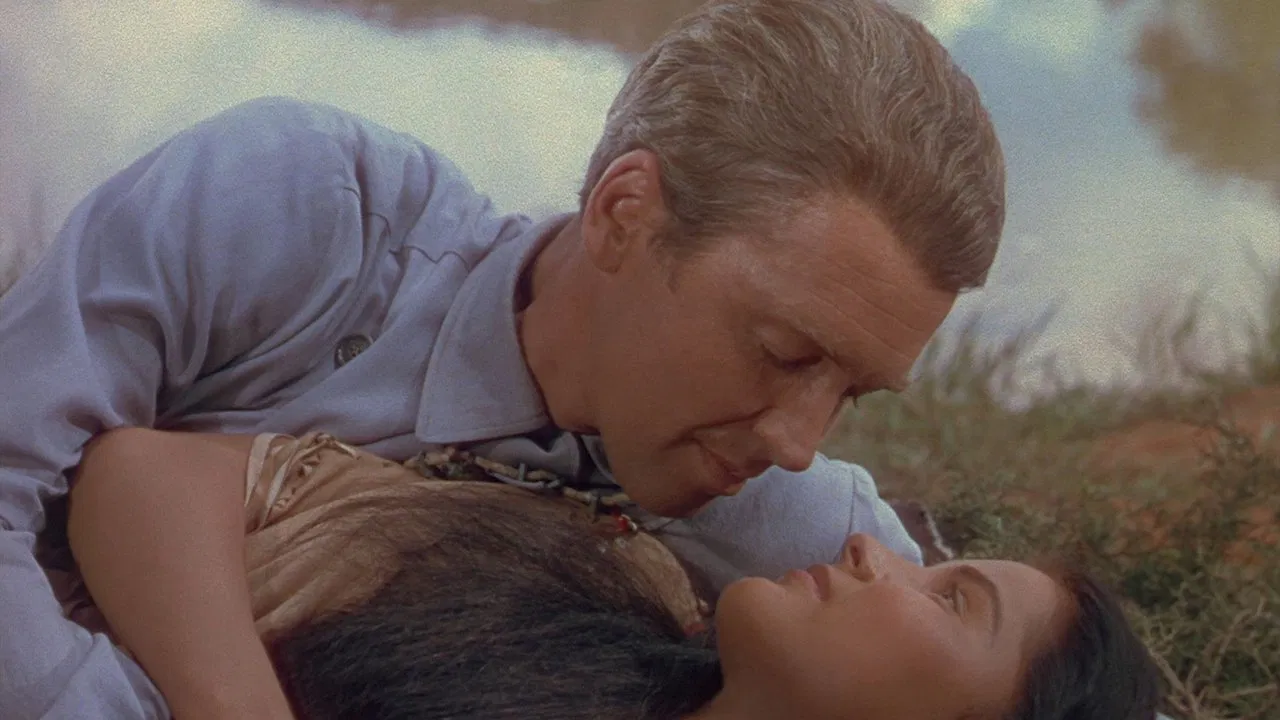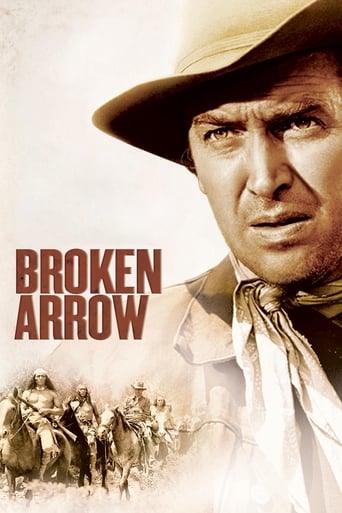

Released in 1950 and directed by Delmer Daves, "Broken Arrow" stars Jimmy Stewart as a former soldier, Tom Jeffords, who saves an Apache teen after ten years of war between settlers and Natives in 1870, Arizona. When the boy's elders extend him mercy Jeffords sees the Apaches as human beings rather than faceless enemies for the first time and becomes the mediator between the warring factions. Jeff Chandler is stunning as the Apache leader, Cochise, but Debra Paget, only 16 years-old during filming, looks too whitebread to be believable. I love Debra, but casting her in this role is eye-rolling. To the film's credit, several of the peripheral Apache characters are played by Native Americans, including Jay Silverheels and John War Eagle. The emphasis is on the Apache way of life and the movie is touted as the first pro-Indian Western ("pro-Indian" to a point), but this simply isn't the case. "Buffalo Bill" with Joel McCrea came out six years earlier and it was clearly favorable toward the Natives. "Broken Arrow" just goes a little further in this direction. Regardless, it is amazing to view Westerns from this long ago that are evenhanded regarding the Indian Wars, honestly portraying the Natives as hostile and formidable, but also with respect to their perspective and way of life. While obviously dated in some respects, both "Buffalo Bill" and "Broken Arrow" stand the test of time and remain entertaining and even enlightening to this day. The movie runs 93 minutes and was shot in Arizona, but also Iversion Ranch & Alabama Hills, California.GRADE: B+ or A-
... View More...but this was a very fine Western, and I don't even like the Western genre particularly well.James Stewart plays Tom Jeffords, an ex-army soldier, scout, and now someone who is panning for gold in Apache country. He comes across a wounded Apache child and heals him, but he doesn't leave Apache country before he comes upon a war party. When they learn he isn't somebody who takes Apache scalps and that he helped one of their own, they let him go but warn him not to return. This teaches him that the Apache can play fair. He decides to learn their ways and language from an Apache in town, and sets out on the dangerous mission to meet Cochise, leader of the Apaches, and to try to slowly build peace between the Apache and the Americans, who are trying to settle Arizona after the Civil War - that is if he survives his first encounter with an Apache scouting party, who just might kill him for the sake of the Apache and Americans being at war.I don't know how accurate this film is historically, but there is some fine acting, action, suspense, and even a touching Anglo-Apache romance. Although the idea of Jeff Chandler as Cochise, who usually played beefcake roles over at Universal, seemed somewhat laughable to me at first, his performance rings true. So true, in fact, there was a kind of sequel where Chandler again played Cochise and Jay Silverheels again played Geronimo.Maybe this film had Jeffords as a kind of "loyal American loner" to speak to issues larger than just that of the history of which this film deals. As a loner Jeffords could see the problem more objectively than somebody with a large extended family and network of friends that could influence him against the reasoning of his own mind. With the Cold War in full swing and the civil rights era just beginning in America at the time it was made, maybe this film was trying to speak for the equality of all people and against the mentality of the mob. I think that's why so many Westerns were made in the 50's and 60's. There was the interesting story on the surface, but there was also the dealing with tricky social issues just under that surface that society wasn't quite ready to face in a direct manner yet.
... View MoreDecent historical drama, just a bit patronising.The true story of Tom Jeffords (played by James Stewart), who, in the early-1870s, negotiated a peace treaty between the Apache tribe, lead by Coshise (played by Jeff Chandler) and the US government.Interesting from an historical perspective, and also from a purely dramatical perspective. Moreover, and rare for a 1950s movie, the Indians are portrayed in a positive light. Well, no worse a light than the white people. However, some of the story appears dramatised, and some stuff is plain unnecessary. Moreover, it all feels a bit patronising towards Indians. Small steps, I guess, after how Indians were usually portrayed in Westerns.Hard to fault any James Stewart performance and he does a good job here. However, his good-guy image and delivery goes a long way to create the patronising feel of the movie.
... View MoreOne of the first revisionist Westerns. I had to watch Broken Arrow for my dissertation on the genre and it was quite a pleasant surprise, but not without its flaws. It's incredibly dated with a studio aesthetic it can't overcome. Dialogue is very on-the-nose, emotions are all on the surface. But it does have an interesting sympathetic portrayal of Native Indians with an unusually pacifist protagonist, played by the always welcome James Stewart. It's a shame that it can't quite get passed its racial caricatures. Mostly watchable for Stewart as ever. Short and sweet helps.7/10
... View More